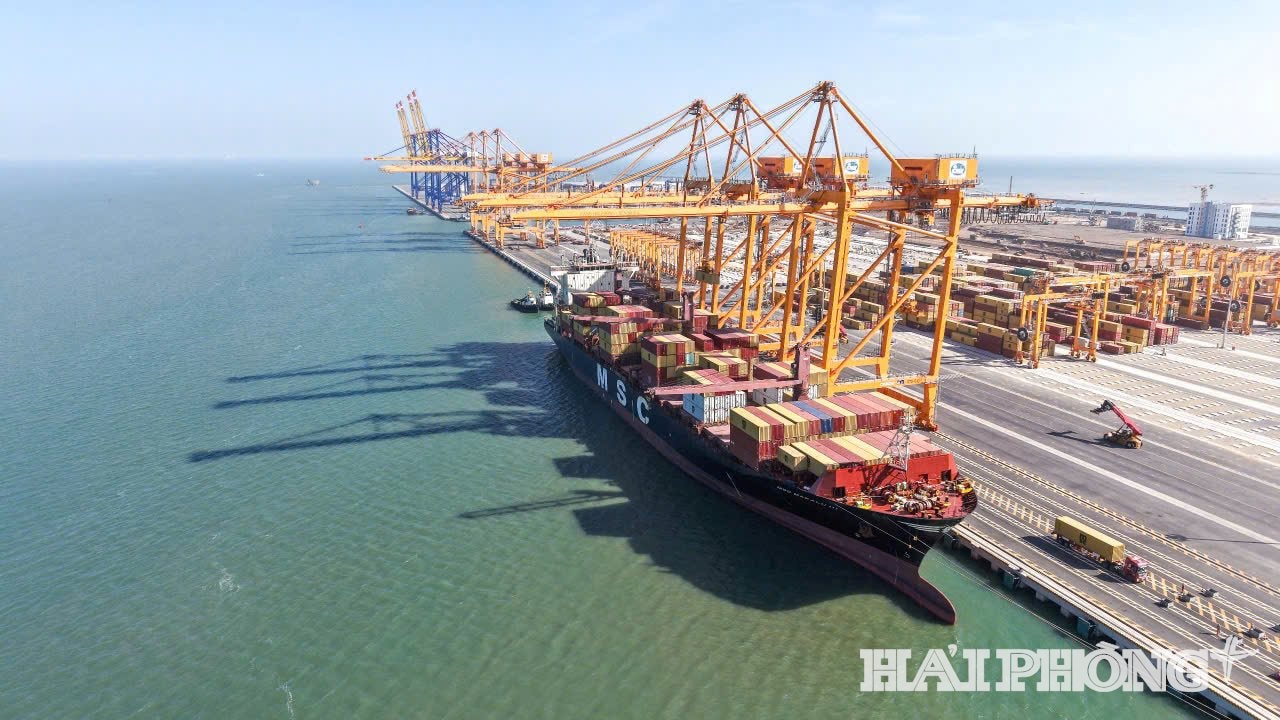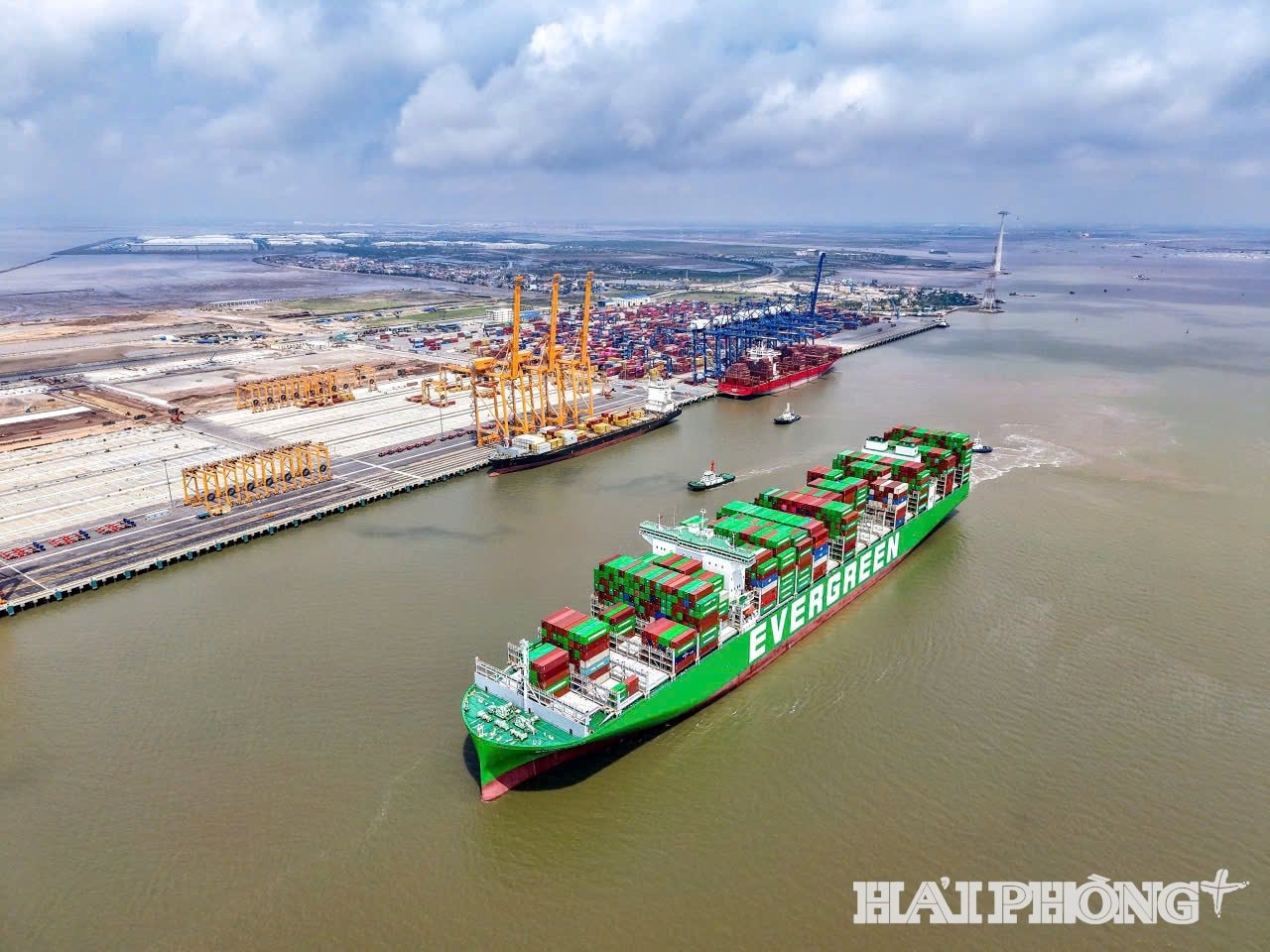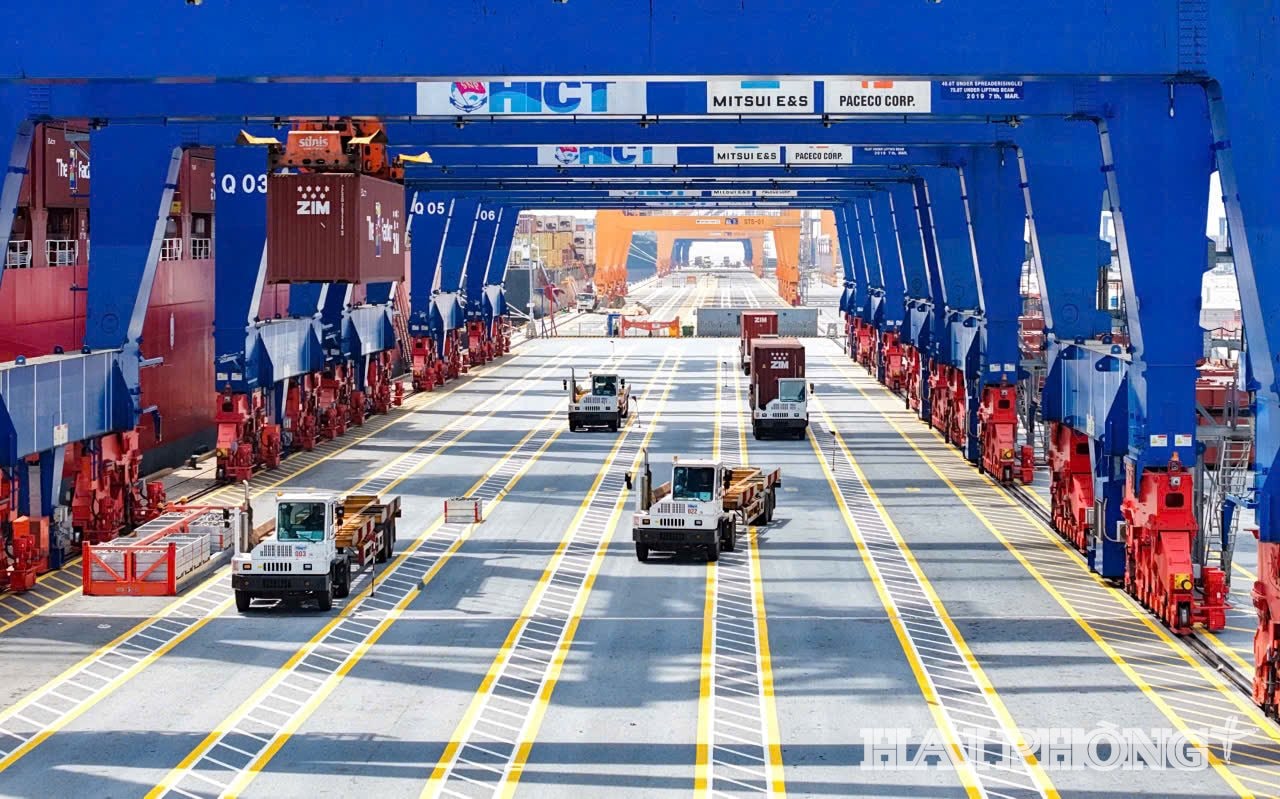Hai Phong enhances position, affirms role as Northern logistics hub
The approval of four new container terminals at Lach Huyen port has created a strong driving force for Hai Phong city to realize its goal of becoming the logistics center of Northern Vietnam.

Lach Huyen deep-water port is part of the Hai Phong port complex. Since the launch of terminals No.1 and No.2 at Lach Huyen port in 2018, Hai Phong has steadily progressed toward its long-standing ambition to operate a modern deep-water seaport capable of handling large vessels without the need for transshipment.
In the second quarter of this year, terminals No.3, No.4, No.5, and No.6 officially went into operation, bringing the total number of active berths at Lach Huyen to six.
As the first deep-water port in northern Vietnam, Lach Huyen can accommodate container ships with a capacity of 12,000 TEUs and general cargo vessels of up to 160,000 DWT. Goods transported from Lach Huyen to international markets no longer require transshipment through regional ports like Hong Kong (China) or Singapore, cutting time and logistics costs while increasing the competitiveness of Vietnamese goods.
.jpg)
Within the broader Hai Phong port system, Lach Huyen stands out thanks to its favorable location beyond the river mouth and convenient transport connectivity via Ha Noi – Hai Phong expressway, the railway network, and upcoming projects such as a coastal road and Tan Vu – Lach Huyen 2 bridge. These connections form an interregional transport corridor that helps reduce logistics costs and enhance the competitiveness of goods from Northern Vietnam.
Cargo throughput at Lach Huyen has grown impressively, particularly for containerized exports and imports bound directly for Europe, the US, Japan, and South Korea.
Major global shipping lines such as Maersk, MSC, ONE, and CMA-CGM have chosen Lach Huyen as a regular port of call. State management of port operations has continued to improve, ensuring safe, smooth, and efficient maritime activity that aligns with international standards.

On July 8, 2025, Deputy Prime Minister Tran Hong Ha signed Decision No. 1497/QD-TTg approving the investment policy for terminals No.9, No.10, No.11, and No.12 at Lach Huyen, with a total capital investment of nearly 24,846 billion VND.
The building these four new container terminals is aimed at developing a modern seaport system capable of accommodating ships with capacities ranging from 12,000 to 18,000 TEUs.
The project will integrate the large seaport with a free trade zone and a logistics center behind to accelerate cargo circulation, thereby enhancing the port’s advantages and driving economic growth and investment.
It will also maximize the natural geographic advantages of Dinh Vu – Cat Hai Economic Zone, including adjacent industrial parks and logistics infrastructure.

This marks a new milestone in the development of Vietnam’s national seaport system and a strong lever for Hai Phong to achieve regional and international logistics hub status, especially after the merger of Hai Phong city and Hai Duong province.
As a coastal city, the former Hai Phong city enjoyed all five modes of transportation and holds a strategic location in the Northern coastal region. It sat at the intersection of two major economic corridors: Kunming (China) – Lao Cai – Ha Noi – Hai Phong and Nanning (China) – Lang Son – Ha Noi – Hai Phong, as well as the Northern coastal corridor, serving as a key transportation hub and the main gateway to the sea for Northern provinces.
Meanwhile, the former Hai Duong province was an active center of industry and agriculture, with a vast network of industrial parks, thousands of processing and assembly factories, and large-scale agricultural production areas.
The integration of the former Hai Duong province’s production and processing capacity with the former Hai Phong city’s seaport logistics infrastructure is expected to boost imports and exports and drive international trade development.
HA NGA
